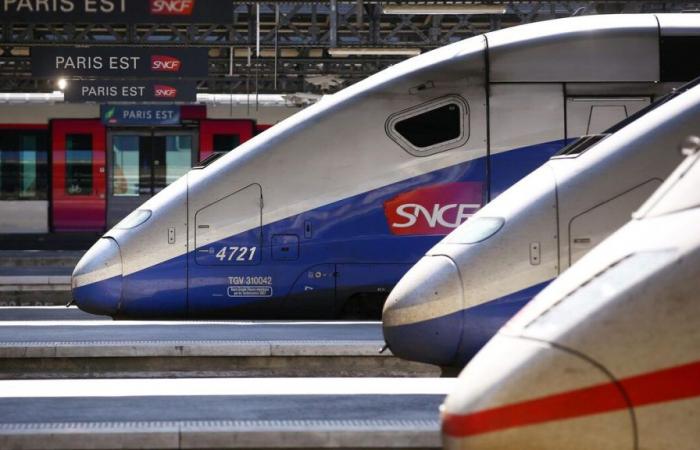
The average price of high-speed trains has increased by 7% in 2023 compared to 2022, according to a document published Thursday by the Transport Regulatory Authority (ART), more than inflation, but it “remains lower in real terms than the 2019 level”.
The prices of TGV or Intercités trains, “which had fallen sharply with the health crisis, seem to be catching up,” explains ART in its annual report. The SNCF had promised not to increase its prices by more than 5% on average in 2023.
They increased in particular for the low-cost Ouigo offer, with an increase of 10% according to the ART, when at the same time annual inflation stood at 4.9%.
The Authority also noted that the higher the train occupancy rate, the more prices increase, as in June and July, “while they are lower in January and February”.
Record occupancy rates
In 2023, occupancy rates reached record levels (77%), particularly on high-speed routes. Attendance increased everywhere while at the same time, train service declined slightly (-1%) according to the ART.
“With 108 billion passenger-kilometers transported (the sector’s benchmark unit), rail passenger numbers have reached a record level in France for the second consecutive year, 6% higher than the 2022 level,” the authority states.
But the rail offer “is slightly down, in particular due to the social movements of March 2023”, she continues. Without the strikes, “the offer would have increased by 2%”, underlines the ART.
The lack of train supply is often pointed out in France as demand explodes and trains fill up more and more quickly, particularly in summer and during long weekends.
Freight in decline
The craze for the train was confirmed in 2023 with increased attendance on regional trains (+7%) as well as on high-speed trains (+5%). Everywhere, TER and Intercités ridership far exceeds the level before the Covid-19 pandemic (+ 21%), with the exception of Île-de-France, where it remains 6% lower.
The success of passenger trains is a European phenomenon as ridership has increased almost everywhere, with increases of up to 32% in Spain or 15% in Great Britain.
A dark side remains: the decline in rail freight, even more marked in France. The drop in 2022 was confirmed in 2023 (-17% of goods transported), particularly due to strikes against pension reform and the landslide in the Maurienne valley.
In Europe, the decline was only 8%. This new fall should further degrade the modal share of freight in goods transport, already low in France (11%) compared to the European average (17%).





